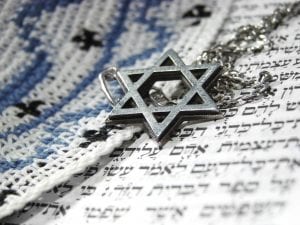Jewish Funeral Service Rituals
Jewish funeral service rituals and practices have traditionally adhered to a strong set of customs and beliefs rooted in the Torah. Despite the similarity of funeral customs across all sects of Judaism, they can vary depending on the specific sect. The following information is based on general Jewish funeral customs. We explore each sect specifically below the table.
The Jewish people hold the philosophy that one should embrace life while accepting the inevitability of death. The emphasis of Judaism concerns how one’s life should be lived, and it does not explicitly define an afterlife. However, it is implied that leading a praiseworthy life will prepare one for what comes after life.
Jewish burials are to take place as soon as possible. Exceptions are made when the family is unable to be present for a short time and for other practical reasons. Jewish funerals emphasize simplicity to avoid embarrassment for the poor. It is a traditional Jewish practice to perform a ritual washing of the body (“Tahara”) and then to dress the body in a plain burial shroud. Watchers (“Chevra Kadisha”) remain with the body around-the-clock until the funeral.
According to traditional practices, the funeral is usually held in a synagogue or funeral home the day after the death. There is no visitation by friends in the presence of the body before the funeral. The body is placed in a simple wood coffin so as not to disturb its natural decomposition. An open casket or cremation is not generally accepted in the Jewish tradition. Male guests are expected to wear a jacket and tie, accompanied by a yarmulke as a head covering, which can be obtained at the funeral home or synagogue. Women wear conservative apparel, such as a skirt or dress in somber colors, but they are not expected to wear a head covering. They should dress modestly – nothing revealing – no short skirts, short sleeves, or open-toed shoes.
The rabbi conducts the service and begins by cutting a black ribbon to symbolize the individual breaking away from loved ones. If you arrive late, it’s wise to wait for an opportune moment to enter, so as not to disturb the service. Cameras or tape recorders are discouraged. The rabbi leads the service and reads the eulogy. A “minyan” (at least 10 Jewish adults, traditionally males) is required to recite prayers.
At the cemetery, more prayers are read, and the family members usually participate in placing dirt on the coffin before it is buried. This symbolizes their acceptance of the finality of death. Jewish funerals are often held entirely at the graveside.
Flowers are not typically used at most Jewish funerals. Instead, donating to a charity or Jewish organization is appreciated. Food, preferably kosher, is welcome.
For Jews, the initial mourning period lasts seven days and is known as Shiva (Hebrew for “seven”). During this time, it is customary to visit the bereaved’s home. There, the family may practice traditions that include covering mirrors, burning memorial candles, or wearing the black ribbon that was cut. Men do not shave, women do not wear makeup, and couples refrain from intimacy. This break from daily routine symbolizes the disruption that death has brought to their lives and demonstrates grief through self-sacrifice.
Twice a day, the bereaved pray for their loved one. They usually return to work within a week, but the mourning period may last as long as a year. On the first anniversary of the death, the bereaved attend a service and unveil the tombstone at the graveside.
Candles are lit on the yearly anniversary of a death, known as Yahrzeit (YORtzait).
| Jewish Funeral Customs Quick Reference Guide | |
|---|---|
| Length of Service | Depends |
| Flowers? | No |
| Food? | Yes |
| Dress Code? (Men/Women) | Dark & Somber / Men: Jacket & Tie |
| Recording Devices? | Voice recorder only |
| Source of Readings? | None |
| Open Casket? | Never |
| Return to Work? (Days) | 7 |
| No. of Days to Mourn? | 30 – 365 |
| Embalming? | Traditionally prohibited |
| Cremation? | Traditionally prohibited but becoming more accepted. |
Orthodox Judaism Funeral Service Rituals
Orthodox Judaism requires strict adherence to sacred funeral and burial practices. Orthodox Jews believe that a person’s body will be resurrected and that there is a physical life after death. The resurrection will occur after the coming of the Messiah, and in the interim, righteous souls receive the pleasures of olam ha’bah, while wicked souls suffer in Gehenna.
It is traditional for extended family and friends to prepare a first meal for the deceased’s immediate family members. However, the food prepared must be kosher, and non-kosher foods should not be taken to a kosher home. While customs have changed and some close friends send flowers to the family weeks after the funeral, this is not the case with Orthodox Jews. It is inappropriate to take flowers to the home of Jewish mourners or to send them to the funeral home. Instead, monetary gifts of tzedakah are given to charities in memory of the deceased.
Jewish laws mandate the proper preparation and interment of the deceased’s body. Before the body is buried, it is washed with warm water by devoted members of the Jewish community. The body is cleaned thoroughly, but never left to rest face down.
Jewish funeral services are typically brief and straightforward, lasting between 15 minutes and one hour. They emphasize the belief that all are the same in life and death. As a result, they are not showy, and there are no flowers or music at the funeral services.
Any condolence calls made to a family that practices Orthodox Judaism should not be made on Shabbat or after the seven days of mourning, which are called the Shivah. The Shivah is counted beginning with the day of the funeral.
Most of the time, funeral services are discouraged from being held inside Orthodox Jewish synagogues. Because of this, funeral services are traditionally held in chapels at mortuaries or at the home. Men and women assemble side by side, and the men cover their heads.
Jewish law stipulates that the body must be buried as quickly as possible following death. The body is laid to rest in a simple wooden coffin. The body is never embalmed, and it is not suitable for public display. Orthodox Jewish funerals are never open casket.
Following the burial, it is traditional for the immediate family members and close friends to return to the mourners’ home. Members of the Jewish community visit the house every evening for the seven days following the interment to participate in Shiva services. Mourners of the deceased do not leave home for work or social activities during these seven days.
Reform Judaism Funeral Service Rituals
The Jewish Reform movement differs from the Orthodox movement in that it rejects any ideas of a bodily resurrection and a physical existence after death. Instead, its practitioners believe in the immortality of all souls that will ultimately return to God. To Reform Jews, a person’s immortality is marked by the memories cherished by the loved ones left behind on earth.
In organized Jewish communities, a burial society called a Chevra Kaddisha is responsible for preparing the deceased’s body for burial. Traditionally, Jewish funerals are straightforward affairs, typically lasting only a short time. Before the service begins, it is tradition that the immediate relatives of the deceased, such as parents, children, siblings, and spouse, will tear their garments, symbolizing their sorrow and loss. However, Reform Jews do not often follow these same ritual practices. Instead, the rabbi will tear black ribbons and hand them to family members. The family will pin the ribbons to their clothing as a symbolic representation of their mourning. Sometimes, the men will loosen their neckties.
In the following portion of the ceremony, Psalms are read, followed by a eulogy and a memorial prayer. The simple pine casket is removed from the room by the male family members of the deceased. The mourners exit the service following the casket, and the rest of the people in attendance remain standing until the mourners have left. In Reform funeral services, people will often express condolences to the family before interment.
Those attending the funeral typically recite a traditional condolence of “Hamakom y’nachem etchem b’toch sh’ar availai tziyon ee yerushalayim.” After the body is buried, the family of the deceased will sit Shiva. Although this was traditionally observed for a period of seven days, many Reform Jews now only observe Shiva for three days. Some have even reduced the period of Shiva to one day.
It is not appropriate to give flowers at a Jewish funeral, but it is acceptable to bring food. However, because many Jews practice dietary laws of Judaism, you should not bring non-kosher meals to the home. During Shiva, mourners usually share stories and fond memories of the deceased.
Typically, the following customs are practiced: the body must be thoroughly washed and placed in a simple pine coffin, the deceased is buried wearing a white shroud, and devoted Jews guard the body from the moment of death until the body can be buried.
Reconstructionist Judaism Funeral Service Rituals
Like Reform Judaism, the Reconstructionist movement doesn’t believe in the physical resurrection of the body. Instead, Reconstructionists believe that the soul returns to join the universe. Traditional Jewish burial laws forbid cremation.
Flowers should never be sent to Jewish funerals or to the home of the deceased’s family. Instead, those who wish to express their sympathy to the family should make a financial contribution to a charity in memory of their loved one. Often, a favorite charity is designated, but your gift can be allocated to the organization or program of your choice. If you’re unsure where to give, there are many options available. One choice is to give to the Jewish National Fund, an organization that plants trees in Israel. Mourners will receive a note informing them that a tree has been planted in memory of the deceased.
Jewish funerals are never open casket, and the services are not ostentatious. The rabbi officiates the service, and the cantor leads the singing. Family members and close friends may give a short memorial or a eulogy. There are no books used, as the service is led entirely by the officiating rabbi. Simple graveside services typically include a recitation of prayers by the rabbi, and the family will be led in a prayer for the deceased, known as a kaddish.
Traditionally, after the mourners arrive at the cemetery, a procession is held to the grave. This procession is slow, and there may be several pauses along the path to the grave. After kaddish has been recited, everyone present at the grave participates in filling it with dirt. The mourners, those closest to the deceased, will pass through two rows of friends and relatives as they exit the gravesite.
Following the funeral, the family returns home to mourn for a period of seven days. This is called sitting shivah. It is common for mirrors to be covered at home during this time so that the family can remain focused on mourning and avoid distractions from vanity. A special candle may also be lit for seven days to memorialize the loved one’s passing. Often, family members sit on small, uncomfortable chairs or boxes during the shivah. Men don’t shave during this time, and shoes are not worn. The mourners also wear a black ribbon that has been cut into a specific shape. All of these rituals are symbolic of the mourners’ lack of concern for their own interests and personal appearance.
Because Jewish laws require that a body be returned to the earth as quickly as possible, remains are interred within 24 hours whenever possible. The body is never embalmed, and a simple all-wood casket is used to hasten the body’s decomposition.
Conservative Judaism Funeral Service Rituals
Conservative Jews, like others, believe that funerals are a sacred rite deserving of dignity, and Jewish funeral traditions are marked by their simplicity. All people are deserving of dignity and respect, and the body retains its sanctity even after death. Conservative Judaism discusses resurrection, but is not specific about its form or nature. It could be in a spiritual sense through remembrance by those still on earth, or in a physical sense following the appearance of the Messiah.
Conservative Jewish funeral and mourning practices carry great religious significance. Because of this, funerals are not elaborate or showy. Family members and visitors mark the solemnity of this life cycle event with their attire. Additionally, flowers and music are often considered inappropriate at funerals. Embalming and viewing of the body are not practiced, and burial should be conducted as soon as possible after a person’s death.
A holy society, known as a Hevra Kadisha, typically oversees funerals in Conservative Jewish communities. This group is comprised of volunteers who assist the mourning family by ensuring that Jewish practices are observed. Sometimes this is done by the Jewish funeral home or a Jewish cemetery society.
The preparation and interment of the body are highly valued commandments. Because these acts of kindness cannot be repaid by the dead, they are considered to be carried out without any ulterior motives. When a member of a Jewish community passes, the Jewish community is responsible for assisting the family with this act.
Several Jewish laws must be observed when someone dies. First, Jewish law requires that interment occur as soon as possible after death. While there are some reasons why burial could be delayed— such as legal issues, transportation of the body, or relatives who must travel from long distances, or to avoid burial on Shabbat or holy days—it is preferred that the body be buried within 24 hours of death.
Jewish laws require that embalming fluids and cosmetics not be used on the deceased. Embalming is never permitted unless civil law requires it. Cremation is also contrary to Jewish tradition. Caskets must be made entirely of wood to hasten the body’s process of returning to the earth, and services are usually held in a synagogue, a funeral home, or they are held at the site of the grave. Services are straightforward and typically brief. Public and private viewings of the deceased’s body are in opposition to Jewish practices.
It is customary and appreciated that a condolence meal be arranged for the mourners. Traditional foods prepared for this meal include round items, such as eggs, because they are symbolic of the Jewish lifecycle. The meal is traditionally served to the mourners at the house of mourning after they return from the cemetery burial.
Friends and acquaintances of the deceased can express their sympathy by making a memorial contribution to a Tzedakah fund of significant importance to the deceased or the family. Condolence calls should be made by visitors during shivah, the seven-day mourning period that takes place following burial. However, condolence calls should not be made on Shabbat.
Messianic Judaism Funeral Service Rituals
Messianic Judaism is a religion that combines elements from both Christian and Jewish faith traditions. As a result, the funeral customs traditionally associated with this religious group are also a blend of funeral rituals and traditions that come from its roots in both religions. This blending of faiths presents some challenges in determining how to carry out funeral rites effectively.
In keeping with Jewish customs, Messianic Jews do not embalm the body of the deceased, citing that it has no added benefit and that it slows the natural process of the body returning to the earth. While the body awaits burial, it is constantly watched and never left unattended.
The casket should also be made entirely of wood, containing no metal hinges, nails, or screws. This, too, helps to ensure that the deceased’s body returns to the earth as quickly as possible. As a last act of tzedakah (Hebrew for “charity”), the people present at the graveside participate in filling in the grave.
Open or Closed Casket?
The casket may be either open or closed, depending on the customs preferred. It is unacceptable for the casket to be open in Jewish traditions. However, in some Messianic congregations where Christian traditions are more prevalent, the casket is left open. This matter is subject to the wishes of the deceased and his or her immediate family members and the customs of the congregation.
The body is dressed plainly in white, and jewelry is not worn. It is preferred that the body be buried within 24 hours.
The Order of the Funeral Service
- Family members will forgive and ask for forgiveness on behalf of the deceased from those they have wronged. This is done individually in front of the closed casket.
- Men may be asked to wear a kippah, a traditional Jewish cap worn by congregants during services.
- An officiating rabbi delivers memorial remarks.
- Psalms and other scriptures and prayers are recited.
- The Mourner’s Kaddish is said.
- Family and friends attend the graveside service. After the casket is lowered, those in attendance help to bury the casket as a last act of tzedakah.
Following the funeral service, there is a noticeable transition from the care of the deceased to the comfort of their bereaved family members as members of the congregation ensure their physical and emotional needs are met during their time of mourning.


